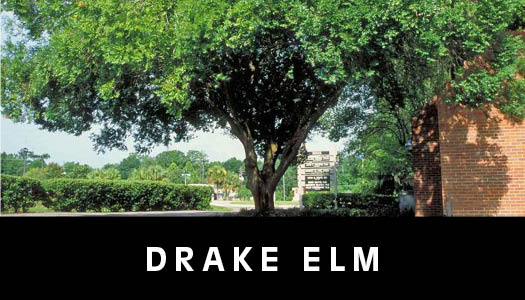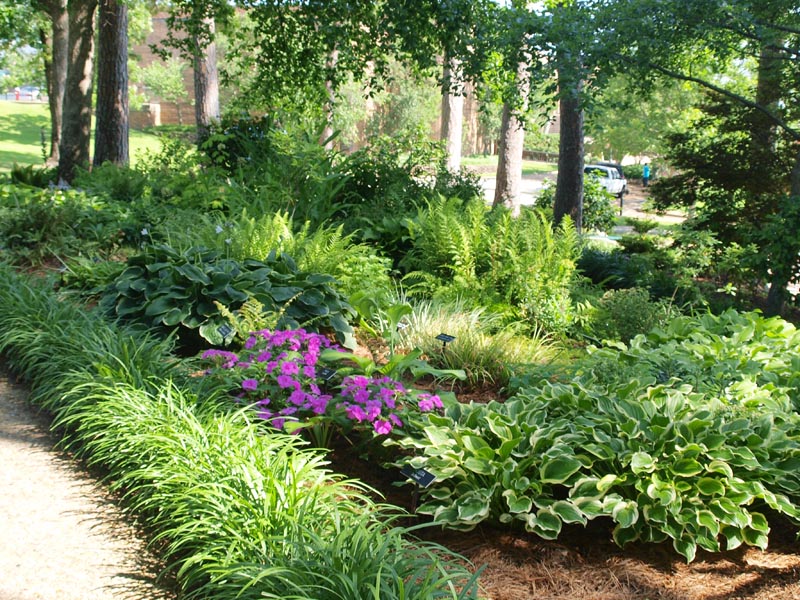If you're looking to create a shady oasis in your North Florida landscape, planting the right shade trees can be a game-changer. Not only do they provide much-needed relief from the sun, but they can also enhance the beauty and value of your property. However, with so many options to choose from, selecting the perfect shade tree for your North Florida landscape can be overwhelming. In this article, we'll explore some of the best shade trees for North Florida lawns and provide tips on how to care for them, so you can make an informed decision and create the your perfect outdoor living space!
1. Drake or Winged Elm

The Drake or Winged Elm tree can get pretty tall - we're talking 40 to 70 feet here! They're happiest when they're hangin' out in areas with some sunlight or partial shade, and they do best in soil that's nice and moist, with lots of nutrients. But, if you end up planting one in dry, sandy soil, don't worry - just make sure you give it a good watering on the regular for the first couple of years and it should adapt just fine. Oh, and they've got a pretty nice rounded canopy and their branches can spread out far and wide, so they're perfect for providing some shade.
They grow fast and they are deciduous, but their leaves are small and easy to clean up. The only warning with these trees is that they love to reproduce seedlings in other areas of the yard. Be careful to manage their volunteer Elms in your other landscape beds and you will love this tree in your Gainesville or St. Augustine landscape.
2. Oak (Southern Live Oak, Shumard, Bluejack, Laurel, or White Oak)
Did you know that there are nineteen types of oak trees that are native to Florida? Some of the most popular ones are the Shumard and live oaks, which are not only appealing to the eye, but they also provide homes and food for wildlife. And if you're into that whole autumn vibes thing, some of these oak trees even have colorful foliage during that season - which is rare in Ponte Vedra landscapes.
Oaks are also known for being really sturdy and long-lasting, especially if you take the time to prune them right. In fact, many types of oaks can even hold up pretty well during a hurricane.Southern Live Oaks do grow relatively slowly, so make sure to plant one of a decent size to enjoy shade. Other Oak varieties do grow quicker, but none are as appealing as a Southern Live Oak.
3. Sweetbay Magnolia

Have you ever checked out a Sweetbay Magnolia Tree? Depending on which type you look at, they can be shaped like an oval, pyramid, or even straight up and down. Some of these trees are nice and thick, which makes them perfect for giving you some privacy or blocking out the sun. And then there are other types that are more spread out, with lots of space between the branches. Those ones are great for being a cool centerpiece in your garden. These trees can grow really tall and skinny, while others are just as wide as they are tall. So, basically, there's a Magnolia Tree for every style out there.
Magnolias are also great for Privacy and give late afternoon shade as the sun starts to set. If your backyard faces the west, enjoying your patio in the afternoon can be quite the challenge, but a well placed fast growing Magnolia tree can make all the difference in the world.
4. Florida Maple

Florida is actually too hot for most maple trees, but there is one type that can handle it - the Florida Maple. This tree is especially cool because it turns a super pretty red-bronze color in the fall, and even its new growth in the spring has a reddish tint. Plus, it grows pretty fast and doesn't get too crazy tall - usually about 40 feet or so. So if you're looking for a good shade tree to put in your yard, the Florida Maple is a great option for seasonal color (a rarity in North Florida lawns) and shade.
5. Sylvester Date Palm

If you're in North Central Florida and looking for a Tropical looking tree to add shade to your patio, consider anchoring your backyard patio with a Sylvester palm. These palms don't need a lot of attention and will do well in the sandy soils of Florida. While they can grow in some shade, they'll look their best if planted in a sunny spot. As the tree gets bigger, it will provide plenty of shade and have a lovely, symmetrical shape. With its graceful fronds and minimal upkeep, the Sylvester palm is a smart choice for anyone who wants to add some shade over your patio or tropical flair to their yard.
6. Ash Tree

Looking for a low-maintenance and fast-growing tree that provides shade in North Central Florida? The Florida Ash tree might be just what you need. These trees are well-suited for Florida's hot and humid climate and can grow well in both full sun and partial shade. The attractive glossy green leaves of the Florida Ash tree make it a great addition to any landscape. If you want to add some shade to your outdoor space or create a relaxing area in your yard, the Florida Ash tree is a fantastic option that won't disappoint!
7. Crape Myrtle

If you're looking to add some color and shade to your North Central Florida landscape, consider growing a larger cultivar Crape Myrtle tree (such as Natchez, Muskogee, Biloxi, or Tuscarora). These trees are a popular choice for their stunning and long-lasting blooms in shades of pink, purple, and white that typically start in the summer and continue well into the fall. They can provide ample shade in Florida's hot and sunny climate, with some cultivars reaching up to 25 feet in height. These trees are low-maintenance and can grow well in full sun or partial shade, making them a versatile option for landscape. With their beautiful flowers and interesting bark, a Crape Myrtle tree is an excellent addition to any outdoor living space looking to add both beauty and shade!
8. Sycamore

This fast-growing, resilient tree is great for shade in North Central Florida. These trees are native to Florida and thrive in the hot and humid climate of the region. With full sun, these trees grow up to 80 feet tall, with large and broad leaves to quickly create a shaded outdoor area in your yard. Their attractive bark peels off in patches, revealing an eye-catching pattern of white, gray, and brown. Sycamore trees are low maintenance for the most part…fall leaf cleanup with Sycamore trees in North Central Florida can be a bit of a challenge due to their large size and the sheer amount of leaves they shed! Whether you want to add natural beauty to your yard or create a peaceful retreat, a Sycamore tree is an excellent choice.
9. Loblolly Bay

These trees are well-suited for Florida's hot and humid climate and can grow up to 40 feet tall, providing ample shade for outdoor spaces. With attractive glossy green leaves and fragrant white flowers in the spring and summer, the Loblolly Bay tree is a beautiful addition to any garden. These trees can thrive in full sun to partial shade and require minimal maintenance, making them an excellent choice for those looking for a low-maintenance yet visually stunning shade tree option in North Central Florida.
Choosing the right shade trees can make your North Florida yard look and feel amazing. By taking a bit of time to plan things out and really think about what you want, you can make your outdoor space a relaxing paradise with plenty of shade and great views that you can enjoy for years to come.







